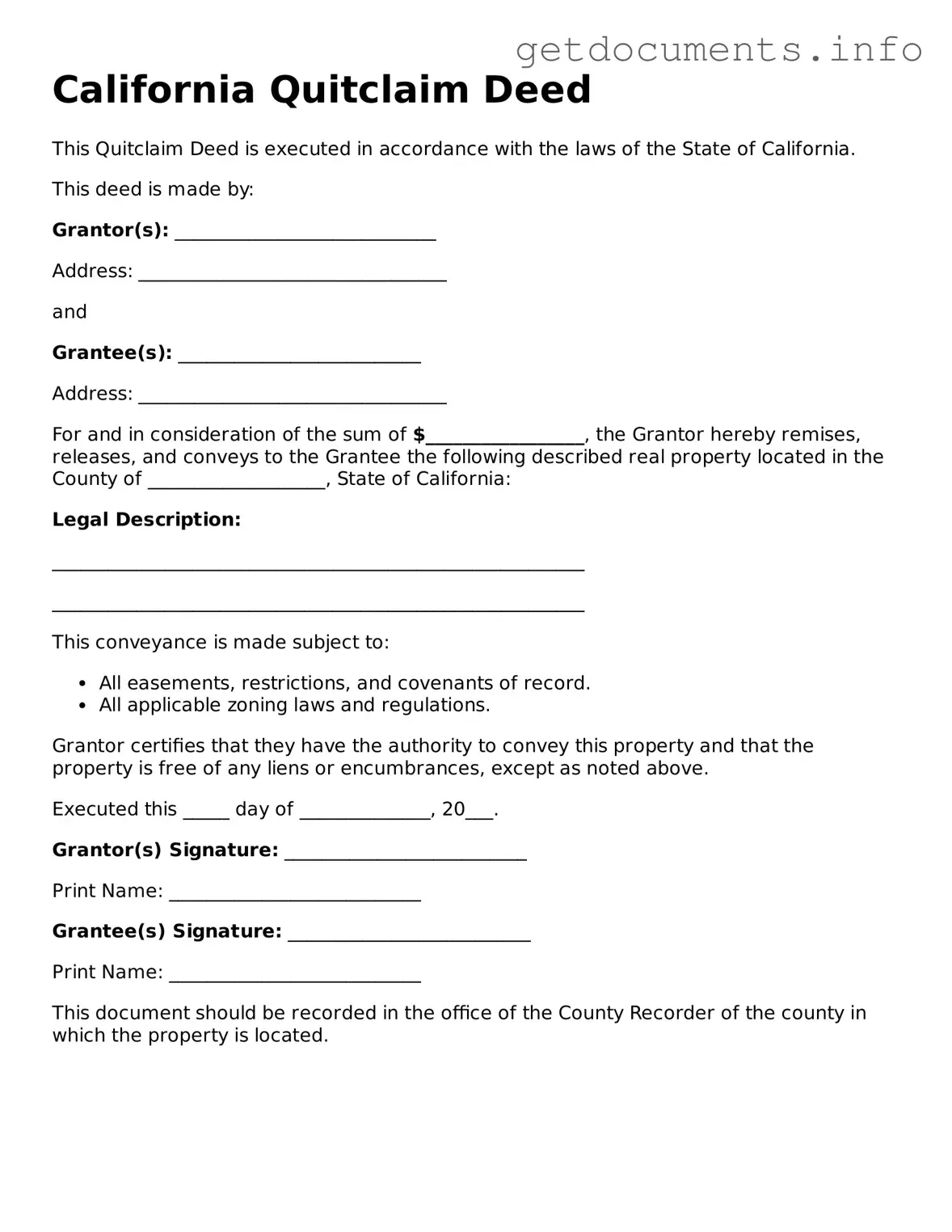The California Quitclaim Deed form serves as a crucial instrument in the realm of property transactions, particularly when individuals wish to transfer their interest in real estate without making any guarantees about the title's validity. This form is often utilized in various scenarios, such as transferring property between family members, resolving disputes, or clearing up title issues. One of the key aspects of the Quitclaim Deed is its simplicity; it requires minimal information, making it accessible for those who may not have extensive legal knowledge. Importantly, while the Quitclaim Deed relinquishes any claim the grantor has to the property, it does not provide any warranties regarding the title. This means that the recipient, or grantee, receives whatever interest the grantor holds, which could be complete ownership or none at all. Understanding the implications of using a Quitclaim Deed is essential, as it can have significant effects on property rights and future transactions. Additionally, proper execution of the form, including notarization and recording with the county, ensures that the transfer is legally recognized and protects the interests of all parties involved.
